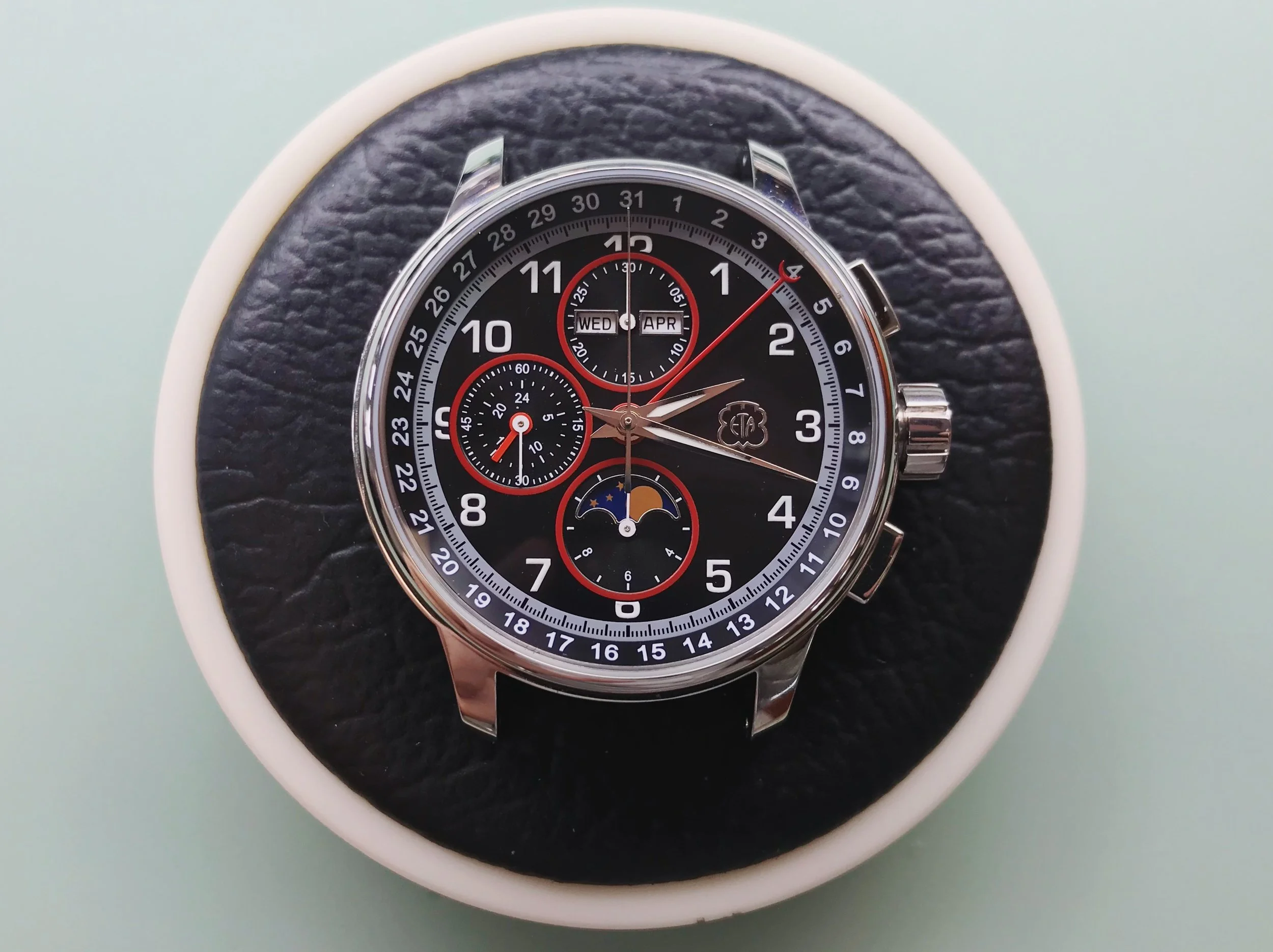7750: Chrono Adjustments

The dust has barely settled after SAWTA 3, but we’re already on to the preparations for SAWTA 4!
SAWTA 4 will be a full ETA 7750 service, complete with casing and polishing. The 7750 is an integrated chronograph, which is considerably more complex than the 2824 that we’ve been working on, and requires many more adjustments to run properly.
The three main adjustments to the chronograph mechanism are the:
- Tilting pinion depthing to the chronograph wheel
- Chronograph wheel finger depthing to the intermediate minute wheel
- Minute counter jumper lateral positioning
The 7750 uses a tilting pinion to drive the chronograph, which is a kind of lateral clutch. The pinion is double-ended, with one side meshing on the bottom with the 4th wheel, and the top side meshing with the chronograph wheel. The bottom continuously meshes, while the top is tilted in and out of engagement by the clutch lever.
An eccentric determines the depthing between the top of the tilting pinion and the chronograph wheel, which needs to be precisely set in order for the chronograph to run without skipping or jamming. The eccentric blocks the clutch lever as it rotates into the "on" position, limiting its travel.
This may look like it's properly engaged, but it's still too shallow. Shocks or eccentricity issues on the chronograph wheel could cause the pinion to disengage, making the chronograph skip.
The tilting pinion's teeth should mesh about 1/2 to 2/3rds of their length down the chronograph wheel's teeth for optimal engagement. Too deep, and the friction will reduce the amplitude at the balance; excessively deep, and the movement will stop.
The chronograph wheel carries a spring finger that advances the minute counter via the intermediate minute counter wheel. The finger itself includes two bends, both of which can be adjusted to correct the depthing.
The wheel on the right is brand new and properly adjusted, while the wheel on the left has a finger that has been heavily adjusted, and is close to physically disintegrating. It takes a practiced eye to see the difference between the two, but the one on the right will barely function, while the one on the left will work perfectly. Watchmaking demands the kind of precision and care that makes it possible to see the difference at a glance. The bend at the finger's base determines its air gap to the intermediate minute counter (which must exist, but be as minimal as possible), and the second bend determines the depth of the finger's engagement to the intermediate minute counter.
To be properly adjusted, the chronograph finger must have a slight but perceptible air gap to the intermediate minute counter. The finger has to clear the intermediate counter's teeth during reset, yet must engage the teeth as it advances.
The finger also must advance the intermediate minute counter wheel by a single tooth, and then take out the backlash of the mesh between the intermediate wheel and the minute counter without disturbing the minute counter at all. It's a tricky adjustment. The backlash should be removed to make the minute jump even, but additional impulse to the intermediate minute counter will cause the minute hand to wobble, which is unacceptable.
The final adjustment is to the minute counter jumper. The jumper spring must rest perfectly in the gap between the minute counter's teeth, with no air gap on either side. Any gap will cause the minute hand to reposition itself when the hammer is zeroed, causing it to land off the marker. The finger can be adjusted laterally via an eccentric, or through manipulation of the spring itself.
That's it for the main chronograph adjustments, but as our instructor warned us, there are many tweaks that can be made to this movement! We'll be training extensively on the 7750 until our SAWTA 4 exam at the end of March.
Watchmaking student at the Lititz Watch Technicum, formerly a radio and TV newswriter in Chicago.













